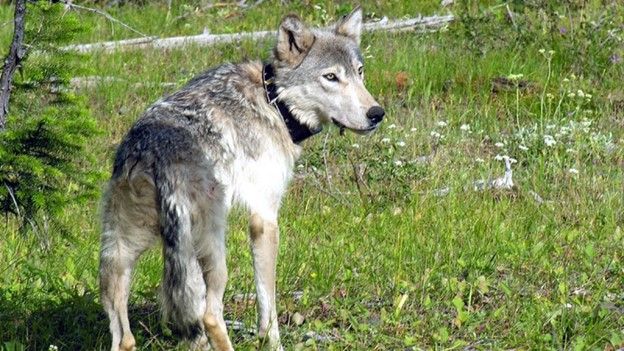Tuleyome's Science Corner: Some Good News About Gray Wolves

Collared Gray Wolf OR -7 (Photo by Oregon Department of Fish and Wildlife)
The Gray Wolf is a species native to California but it is believed that they were extirpated (eliminated) in the 1920’s. Nobody knows for sure how the population declined so drastically but was most likely the result of habitat disturbance and hunting to reduce possible predation on livestock. Their historic range in California is thought to have included the Sierra Nevada, the southern Cascades, the Modoc Plateau, the Klamath Mountains and possibly the Northern Coast Range. They also may have occurred in the Central Valley to the western slope of the Sierra Nevada. The Gray Wolf has been provided protection under the California Endangered Species Act since 2014 and although they have not been reintroduced into the state, Gray Wolves are returning to California as individuals disperse from other populations in nearby states. OR-7 famously entered California from Oregon in 2011. Since then, several other radio-collared wolves have dispersed into California resulting in three breeding packs; the Shasta Pack, the Lassen Pack and the Whaleback Pack which produced its first litter in 2021.
The Gray Wolf (Canis lupus), also known as the Timber Wolf, is the largest member of the Canidae (dog) family. It is thought that they were first domesticated in East Asia several thousand years ago and through selective breeding and the passage of time, produced dogs. There are many subspecies of the Gray Wolves in North America, Eurasia and Africa. Extremely powerful jaws armored with large canine teeth and the ability to run down prey at nearly 40 miles per hour have allowed wolves to become top predators no matter where they live. Gray Wolves average from around 30 to over 100 pounds and are about six and a half feet in length, depending on geographical location. The largest wolves are found in Canada, Alaska and northern Asia. Their coat color also varies depending on their geographic location. It is usually gray but may also be brown, black, red or white with their bellies usually being light yellowish-white. Those found in the Arctic regions tend to be lighter colored. Hunting occurs mostly at night and prey species are large herbivores such as deer, elk, moose, bison, caribou and bighorn sheep, again depending on their location. Although wolves seldom kill livestock or domestic animals, deaths attributed to wolves are increasing as the wolves’ range increases. Many states offer compensation for the loss of livestock when evidence of a wolf kill is present.
Gray Wolves live in tight family groups called packs from ten to two dozen individuals. The pack usually consists of a breeding pair (also called the alpha male and female) and their offspring and they form very strong social bonds. The alpha male and female continuously assert their dominance and guide the activities of the entire pack. The alpha female cares for and defends the pups while the alpha male manages foraging, feeding and travel for the pack. Both the alpha male and female track and take down prey. The pack’s territory ranges from about 30 and 1,200 miles depending on prey availability and is forcefully defended. Wolves communicate by facial expression, body and tail posture, vocalization and scent marking. Howling strengthens social bonds and keeps the pack in contact with each other. Scent marking warns other packs and intruders to stay away. Interestingly, intruders are usually killed but in some circumstances are accepted into the pack.
Breeding usually occurs between February and April and five or six pups are born two moths later. The young nurse for about eight weeks, after which they emerge from the den and become the center of attention for all members of the pack. As they grow, they are moved frequently and when fall approaches and the pack begins to wander, the pups are near adult size and are old and strong enough to keep up.
After about two years, the young may leave the pack to search for a mate and establish their own territory and pack. Some collared wolves that leave their pack are documented to have traveled almost 600 miles. The young that stay with the pack may eventually replace a breeding adult. Some larger packs have more than one breeding female.
Wolves rarely attack humans and usually avoid contact with them. They can live to the age of 13 in the wild but most die long before that. The same diseases that domestic dogs are vaccinated against also affect wolves, although humans are their main cause of death.
Being on the Endangered Species List isn’t typically a good thing but, inclusion on the list does provide some protection for the listed species. On February 8, 2022, a U.S. District Judge ruled in favor of a lawsuit brought by the Human Society and other wildlife organizations against the United States Department of the Interior last January that removed the Gray Wolf from the Federal Endangered Species List.
To lean more about Gray Wolves in California please visit California Department of Fish and Wildlife's website.
-Kristie Ehrhardt; kehrhardt@tuleyome.org
Tuleyome Land Conservation Program Manager
RECENT ARTICLES






